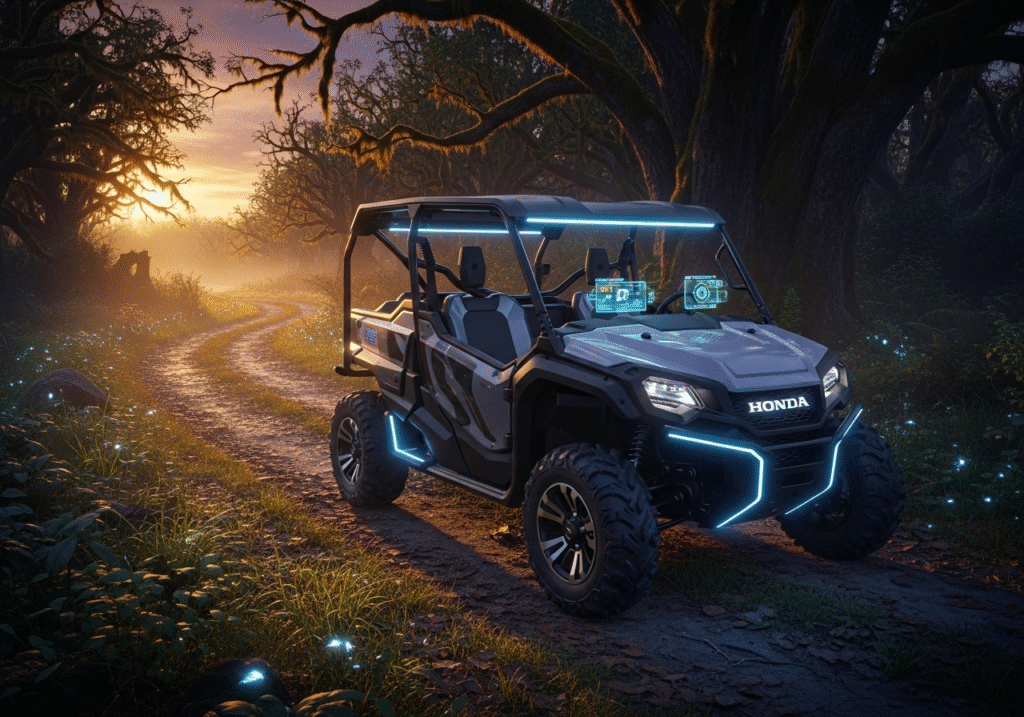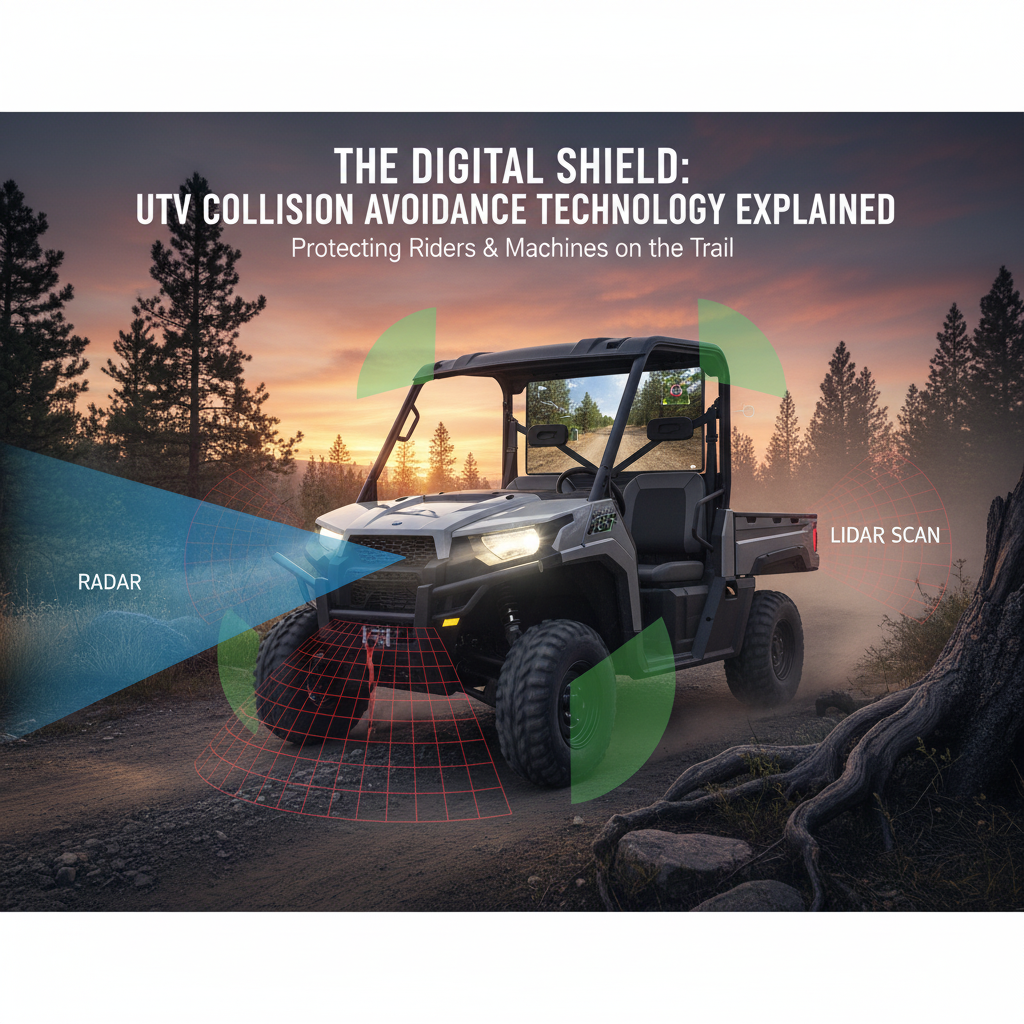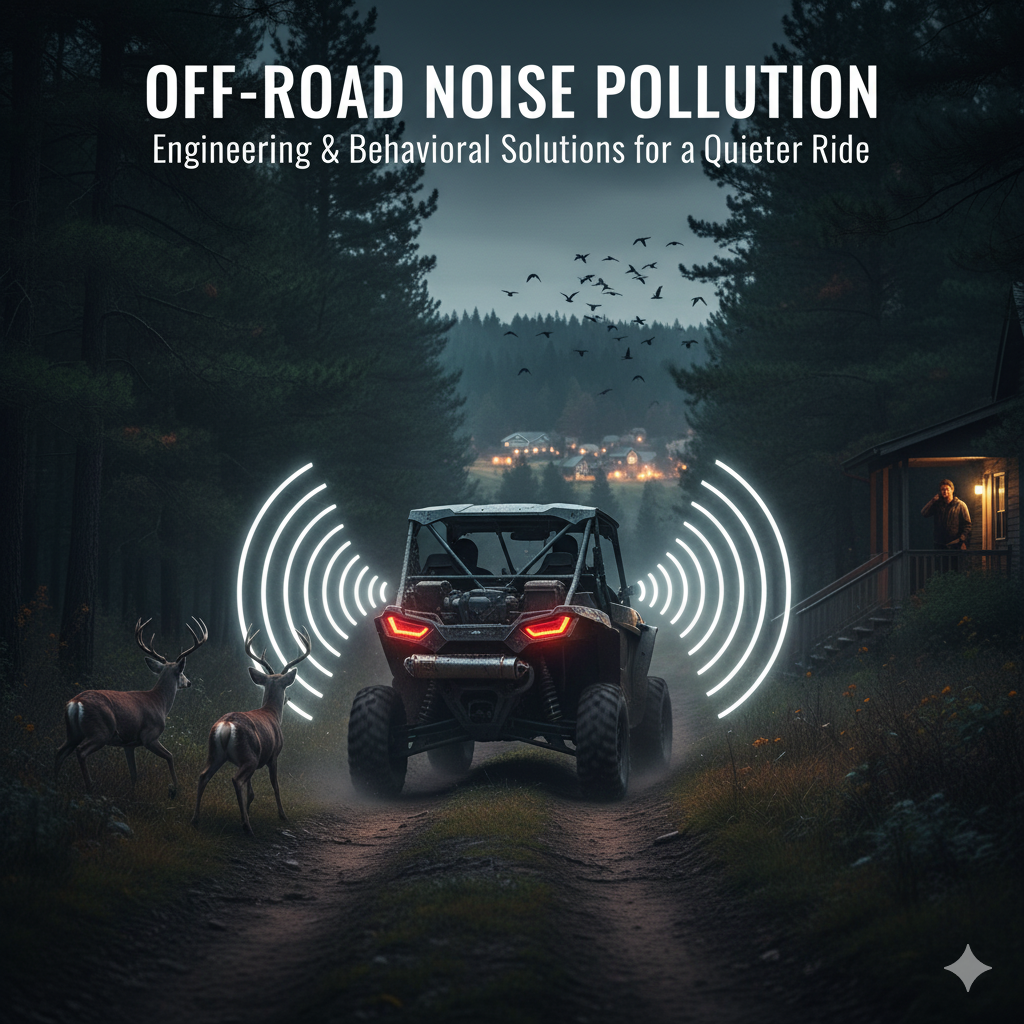The Whisper of the Wild: Why Electric UTVs are the Future
Hey there, fellow off-road enthusiasts! Have you ever been out on the trails, enjoying the beauty of nature, only to have the roar of your UTV’s engine shatter the peace?
I know I have. It’s a common trade-off, isn’t it?
The thrill of exploring rugged terrain versus the desire to truly immerse ourselves in the tranquility of the wilderness.
But what if I told you there’s a way to have both?
What if your trusty Honda Pioneer could glide through the forest with barely a whisper, leaving only tire tracks and not a cloud of exhaust?
That’s not some far-off dream, my friends.
We’re talking about electric conversion kits for the Honda Pioneer, a fascinating leap into future tech that’s closer than you might think.
While a ready-made, plug-and-play kit specifically for the Pioneer might not be sitting on a shelf at your local dealership just yet, the world of DIY electric UTVs is buzzing with possibilities.
And let me tell you, the journey of transforming a gas-guzzling beast into a silent, eco-friendly trail companion is an adventure in itself.

The Allure of Electric: Benefits You Can’t Ignore
So, why go electric? Beyond the obvious cool factor of having a cutting-edge machine, the benefits of converting your Honda Pioneer to electric power are truly compelling.
I’ve been digging into this, and here’s what really stands out:
1. Silent Operation: Embrace the Quiet
This is, for me, the number one reason.
Imagine cruising through the woods, the only sounds being the crunch of tires on gravel and the rustle of leaves.
No more engine noise scaring away wildlife or disrupting the peace of your surroundings.
For hunters, photographers, or anyone who simply cherishes the tranquility of nature, silent operation is a game-changer.
It allows for a deeper connection with the environment, turning every ride into a truly immersive experience.
2. Reduced Maintenance: More Ride Time, Less Wrench Time
Let’s be honest, who loves spending their weekends changing oil, replacing spark plugs, or fiddling with carburetors?
Not me! Electric motors have significantly fewer moving parts than internal combustion engines.
This translates directly to less maintenance, fewer fluids to check, and ultimately, more time out on the trails doing what you love.
It’s a simpler system, and simplicity often means reliability.
3. Instant Torque: Power When You Need It
One of the most exhilarating aspects of electric vehicles is the instant torque delivery.
Unlike gasoline engines that need to rev up to reach peak power, electric motors provide maximum torque from a standstill.
This means incredible acceleration and impressive climbing ability, making short work of steep inclines and challenging terrain.
It’s a feeling of immediate, raw power that can truly transform your off-road experience.
4. Lower Running Costs: Save Your Pennies
While the initial investment in an electric conversion might seem significant, the long-term running costs are often much lower.
Electricity is generally cheaper than gasoline, especially if you can charge at home during off-peak hours or with solar power.
Plus, with reduced maintenance needs, you’ll save on parts and labor over the lifespan of your electric UTV.
5. Environmental Benefits: Ride Green
In today’s world, being environmentally conscious is more important than ever.
Electric UTVs produce zero tailpipe emissions, contributing to cleaner air and a healthier planet.
By converting your Honda Pioneer, you’re not just upgrading your ride; you’re making a statement about your commitment to sustainable recreation.
It’s a small step, but every step counts.
The Road Less Traveled: Challenges to Consider
Now, I wouldn’t be giving you the full picture if I didn’t talk about the hurdles.
While the allure of an electric Honda Pioneer is strong, there are some significant challenges to navigate, especially if you’re considering a DIY conversion.
1. Limited Range: The Electric Leash
This is often the first concern people have, and for good reason.
Electric UTVs, especially converted ones, can have a more limited range compared to their gasoline counterparts.
The distance you can travel depends heavily on the battery capacity, terrain, and how aggressively you drive.
This means careful planning for longer excursions and potentially carrying extra battery packs or having charging points available.
It’s a different mindset, for sure, but one that can be managed with foresight.
2. Weight: The Battery Burden
Batteries, especially those with enough capacity to power a UTV, are heavy.
This added weight can impact the vehicle’s handling, suspension, and overall performance.
It’s a critical factor to consider when designing your conversion, as you’ll need to ensure your Honda Pioneer can safely and effectively carry the extra load without compromising its integrity or your safety.
3. Cost: An Investment in the Future
Let’s not sugarcoat it: electric conversion can be a significant investment.
High-performance electric motors, advanced controllers, and large battery packs don’t come cheap.
While the long-term running costs are lower, the upfront expense can be a barrier for some.
It’s important to do your research, budget carefully, and weigh the initial outlay against the long-term savings and environmental benefits.
4. Complexity: Not for the Faint of Heart
Unless you’re a seasoned electrical engineer or a highly skilled mechanic, a DIY electric UTV conversion is a complex undertaking.
It involves understanding electrical systems, fabricating custom mounts, integrating various components, and troubleshooting potential issues.
It’s a rewarding project, no doubt, but it requires dedication, research, and a willingness to learn.
If you’re not comfortable with this level of complexity, seeking professional help or waiting for more readily available kits might be a better option.
5. Charging Time: Patience is a Virtue
Unlike filling up a gas tank in minutes, recharging a large battery pack can take several hours.
This can impact your ability to do multiple long rides in a single day or require overnight charging.
Fast-charging solutions are emerging, but they often come with additional costs and infrastructure requirements.
6. Overheating: Keeping Cool Under Pressure
High-performance electric motors and controllers can generate a significant amount of heat, especially under heavy loads.
Proper cooling systems are crucial to prevent damage and ensure optimal performance.
This adds another layer of complexity to the conversion process, requiring careful consideration of airflow, heat sinks, and potentially liquid cooling solutions.
The DIY Spirit: Building Your Electric Pioneer
Given the current landscape, converting your Honda Pioneer to electric is largely a DIY endeavor. But don’t let that intimidate you!
The beauty of DIY is the control you have over every component and the immense satisfaction of building something truly unique.
Key Components You’ll Need:
Electric Motor: This is the heart of your electric UTV.
Companies like D&D Motor Systems [1] specialize in high-performance electric motors for ATVs and utility vehicles.
You’ll need to consider factors like power output (kW or horsepower), voltage, and continuous vs. peak power.
Motor Controller: This acts as the brain, managing the power flow from your batteries to the motor based on your throttle input.
Matching the controller to your motor and battery voltage is crucial for efficiency and safety.
Batteries: Lithium-ion batteries are the go-to choice for their energy density and lighter weight. The capacity (Ah or kWh) will determine your range.
This is often the most expensive component, so research carefully.
Battery Management System (BMS): Absolutely essential for the health and longevity of your battery pack.
A good BMS monitors individual cell voltages, temperatures, and balances the charge, preventing overcharging or over-discharging.
Throttle: To control your speed, just like in a gas UTV.
Wiring and Connectors: High-quality, appropriately gauged wiring and connectors are vital for safety and efficiency, especially with high-current systems.
Charger: You’ll need a charger compatible with your battery pack’s voltage and chemistry.
Where to Find Resources:
The DIY electric vehicle community is incredibly supportive.
Forums like Endless Sphere [2] and DIY Electric Car Forums [3] are treasure troves of information, build logs, and experienced individuals willing to share their knowledge.
You can learn from others’ successes and, more importantly, their mistakes.
Electric UTV Conversion: Benefits and Challenges at a Glance
To help visualize the pros and cons we’ve discussed, here’s a quick infographic summarizing the key benefits and challenges of converting your UTV to electric power.
It’s a great way to quickly grasp the core considerations.
See It in Action: An Electric UTV Build
If you’re like me, sometimes seeing is believing. While finding a direct Honda Pioneer electric conversion video over 20 minutes is tough, this video, “Build a POWERFUL 4×4 Electric CAR at Home” [4], gives a fantastic overview of a similar electric vehicle build.
It showcases the dedication and ingenuity involved in such projects and can provide valuable insights and inspiration for your own potential conversion.
The Future is Silent: Is an Electric Pioneer for You?
The idea of a silent, powerful, and environmentally friendly Honda Pioneer is incredibly appealing.
While the path to an electric conversion might involve some challenges, the benefits are undeniable.
Imagine the possibilities: exploring pristine wilderness areas without disturbing wildlife, enjoying peaceful rides with only the sounds of nature, and contributing to a greener future.
Whether you decide to embark on a full DIY conversion, wait for more readily available kits,
or simply dream of a future where silent trails are the norm, the conversation around electric UTVs is growing.
It’s an exciting time to be an off-road enthusiast, with innovation pushing the boundaries of what’s possible.
So, what do you think?
Are you ready to embrace the whisper of the wild? The future of off-roading is electric, and it’s calling your name.
References
[1] D&D Motor Systems. *ATV, Utility Vehicle & Hunting Buggy Motors*. Available at:
[2] Endless Sphere. *DIY EV Forum*. Available at:
[3] DIY Electric Car Forums. Available at:
[4] CHERAL AUTO. (2020, January 4). *Buil
d a POWERFUL 4×4 Electric CAR at Home* [Video].
YouTube. Available at:







